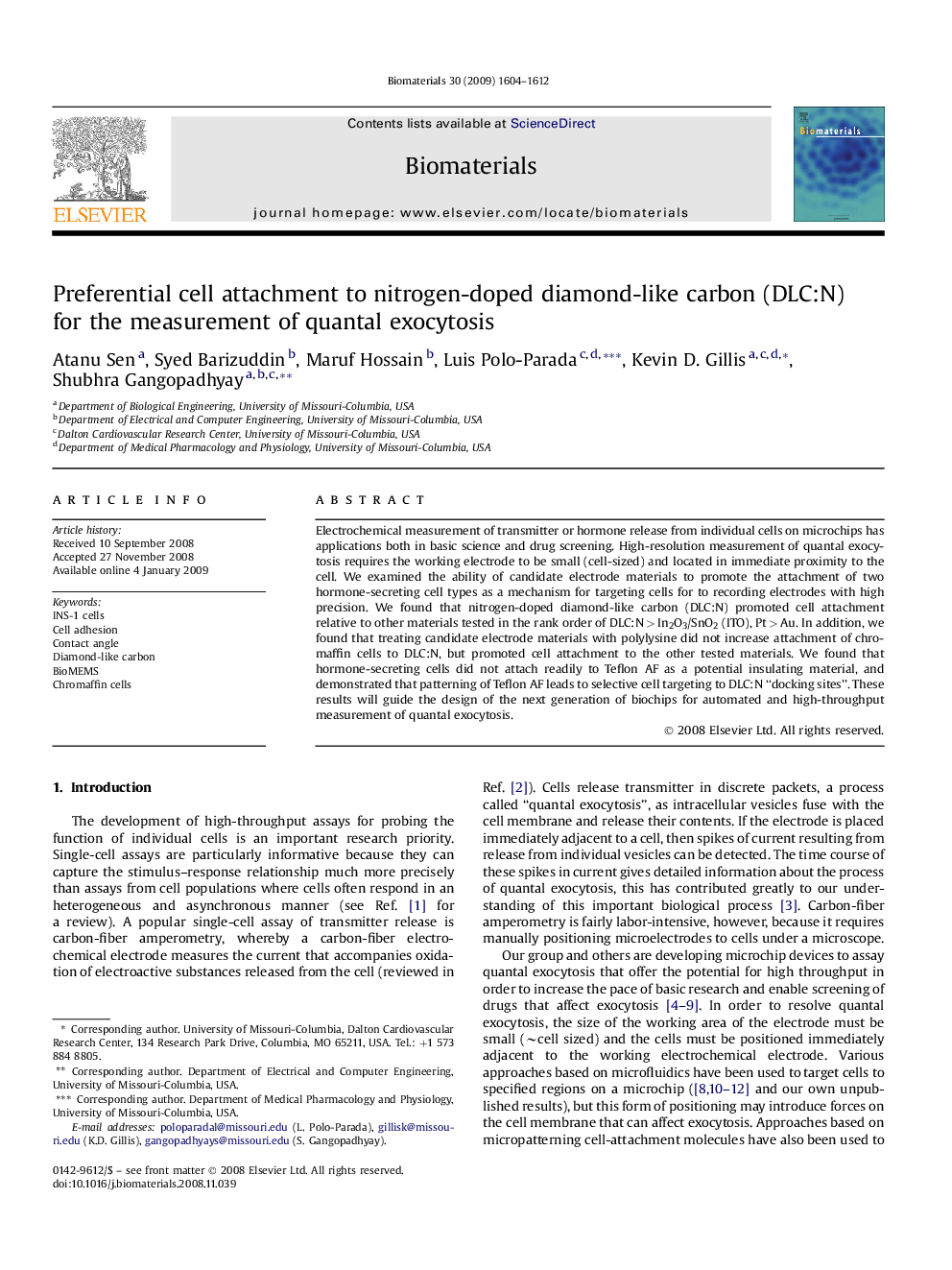| Article ID | Journal | Published Year | Pages | File Type |
|---|---|---|---|---|
| 10164 | Biomaterials | 2009 | 9 Pages |
Electrochemical measurement of transmitter or hormone release from individual cells on microchips has applications both in basic science and drug screening. High-resolution measurement of quantal exocytosis requires the working electrode to be small (cell-sized) and located in immediate proximity to the cell. We examined the ability of candidate electrode materials to promote the attachment of two hormone-secreting cell types as a mechanism for targeting cells for to recording electrodes with high precision. We found that nitrogen-doped diamond-like carbon (DLC:N) promoted cell attachment relative to other materials tested in the rank order of DLC:N > In2O3/SnO2 (ITO), Pt > Au. In addition, we found that treating candidate electrode materials with polylysine did not increase attachment of chromaffin cells to DLC:N, but promoted cell attachment to the other tested materials. We found that hormone-secreting cells did not attach readily to Teflon AF as a potential insulating material, and demonstrated that patterning of Teflon AF leads to selective cell targeting to DLC:N “docking sites”. These results will guide the design of the next generation of biochips for automated and high-throughput measurement of quantal exocytosis.
